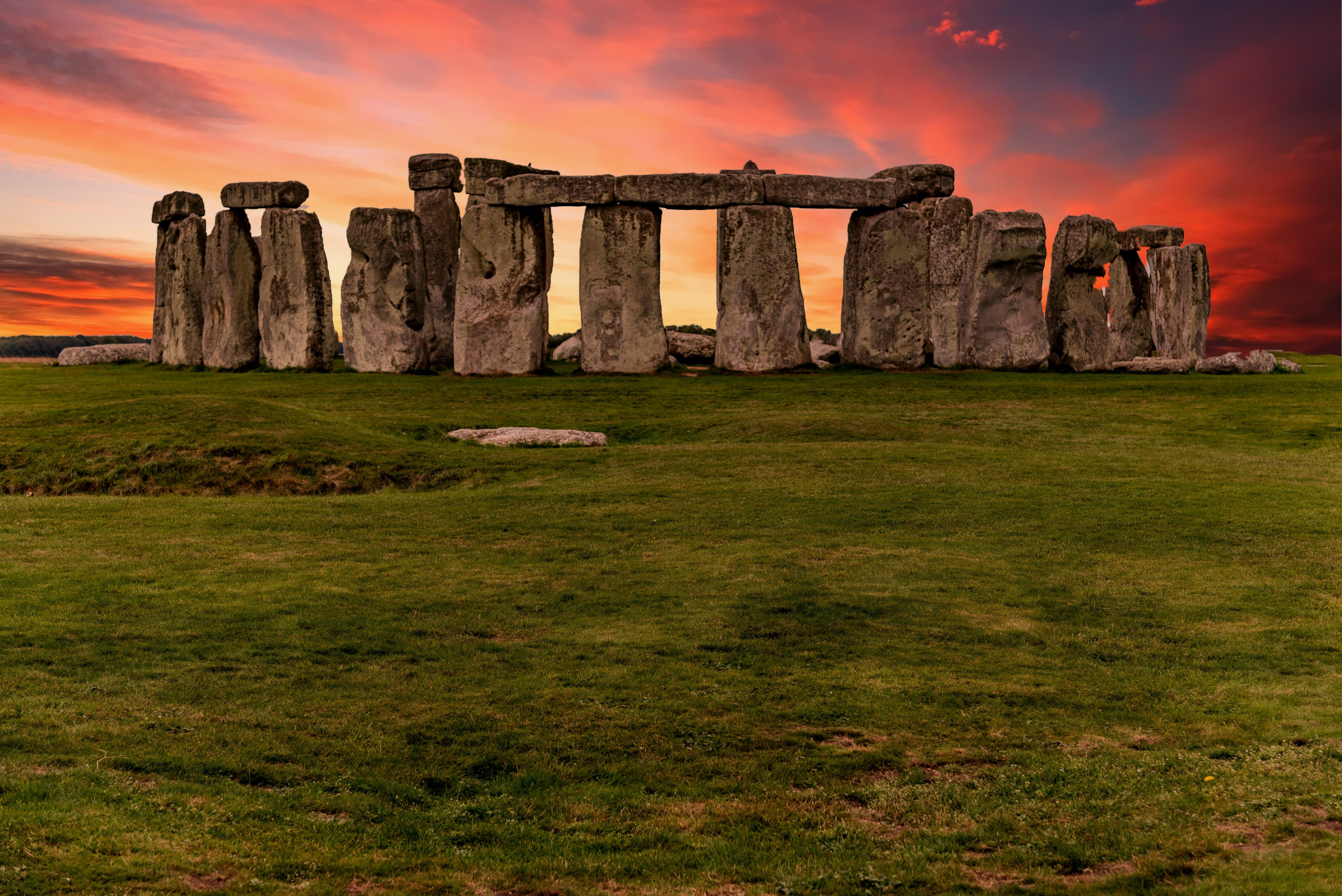
Long before ancient Britons erected the mysterious monoliths of Stonehenge on Salisbury Plain, the region was a hunting hot spot where Mesolithic people stalked animals, including, researchers now believe, aurochs, an extinct cattle species.
Researchers from the University of Birmingham and Ghent University have uncovered hundreds of what appear to be large prehistoric pits dug to trap large game such as aurochs, red deer, and wild boar. They also found thousands of smaller holes in the ground.
Some of the pits, dug into the chalk bedrock, were large enough that they would have involved moving some 165 tons of solid chalk—an impressive feat for their antler pickaxes and stone tools.
“The new discoveries we’ve made demonstrate that Stonehenge’s prehistoric landscape was even more complex than we had thought. Our work suggests that Britain’s most famous archaeological area still has a lot more mysteries to reveal,” Paul Garwood, senior lecturer in prehistory at the University of Birmingham, told the Independent.
Excavations of what appears to be a prehistoric hunting pit near Stonehenge. Photo courtesy of the University of Birmingham.
The study, published this week in the Journal of Archaeological Science, involved an electromagnetic induction survey of the Stonehenge landscape—the largest-scale use of this detection system, which is based on the electrical conductivity of soil, ever carried out.
“Geophysical survey allows us to visualize what’s buried below the surface of entire landscapes,” Philippe De Smedt, an associate professor at Ghent University, said in a statement. “The maps we create offer a high-resolution view of subsurface soil variation that can be targeted with unprecedented precision.”
Based on the resulting geophysical data, the team conducted computer-generated analyses of thousands of features revealed below the surface of the earth. The team drilled 60 geoarchaeological boreholes and targeted 20 sites for archaeological excavation—the first time the results of an electromagnetic induction survey have been confirmed on the ground.
“By combining new geophysical survey techniques with coring and pin point excavation, the team has revealed some of the earliest evidence of human activity yet unearthed in the Stonehenge landscape,” Nick Snashall, archaeologist for the Stonehenge and Avebury World Heritage Site, added. “The discovery of the largest known Early Mesolithic pit in northwest Europe shows that this was a special place for hunter-gatherer communities thousands of years before the first stones were erected.”
Stonehenge. Photo by Kris Schulze, Pexels.
Archaeologists have conducted excavations at six of the 400 large pits, including the Mesolithic one, which dates from 8,200 to 7,800 BCE—about 5,000 years before Stonehenge was built. But the ancients’ use of these pits span thousands of years, suggesting that the area was a popular hunting ground not only over generations, but across geological eras.
“What we’re seeing is not a snapshot of one moment in time,” Garwood added. “The traces we see in our data span millennia, as indicated by the 7,000-year timeframe between the oldest and most recent prehistoric pits we’ve excavated. From early Holocene hunter-gatherers to later Bronze Age inhabitants of farms and field systems, the archaeology we’re detecting is the result of complex and ever-changing occupation of the landscape.”
Another recent study published in PLOS One, suggests that Stonehenge was erected in an open woodland where large herbivores grazed, in an area that was familiar both to Mesolithic hunter-gatherers and the Neolithic monument builders that followed them.
Samuel Hudson, a researcher at the University of Southampton in the U.K., led research at Blick Mead, an early hunter-gatherer spot on the edge of the Stonehenge World Heritage Site, testing samples of ancient animal remains, pollen, and DNA to better understand the prehistoric landscape and how it would have been experienced by Mesolithic hunter gatherers—although it doesn’t explain why they chose to build Stonehenge there.
“The repeated occupation of this one area over thousands of years,” Hudson told Haaretz, “suggests that there were elements of the environment that made it attractive.”